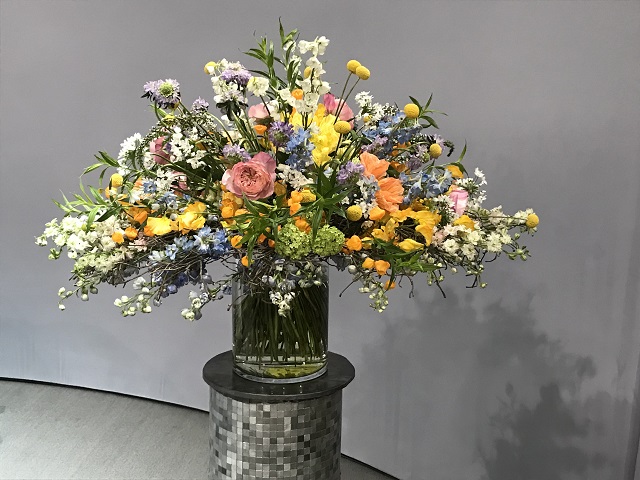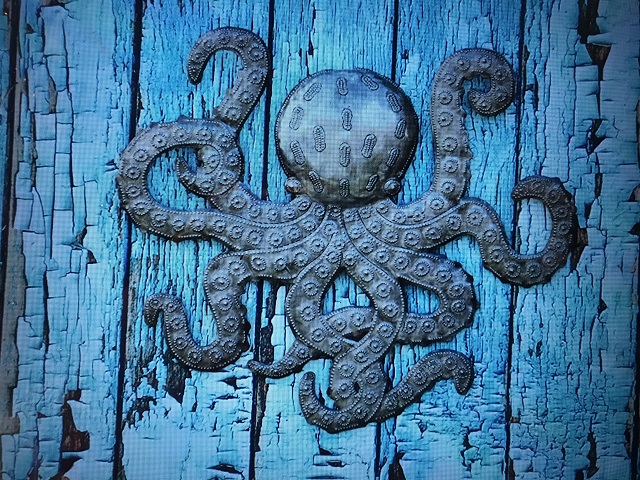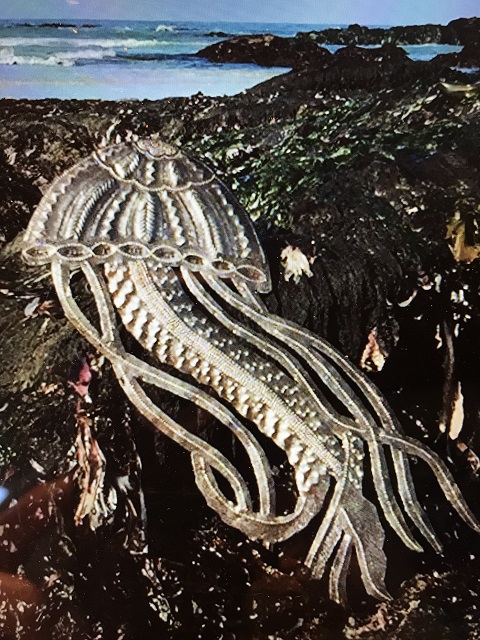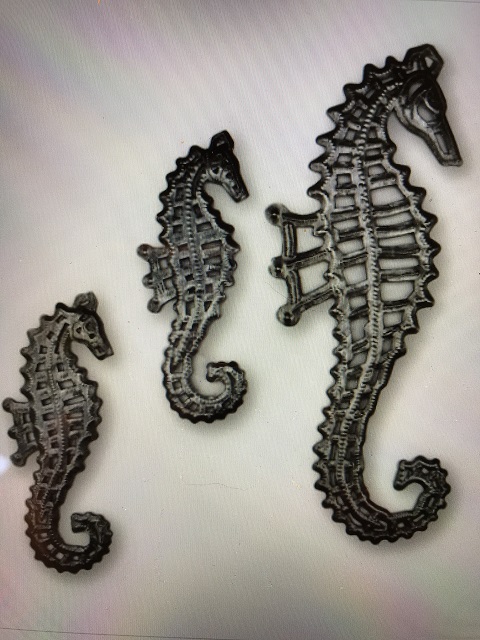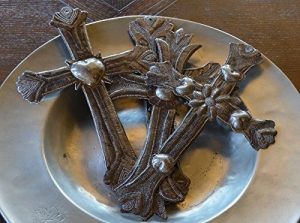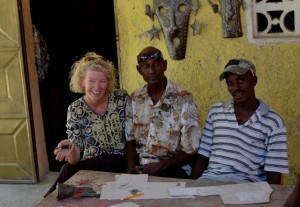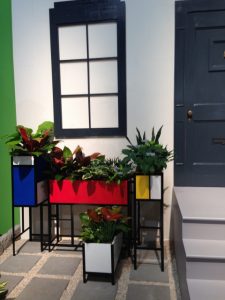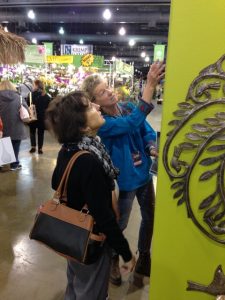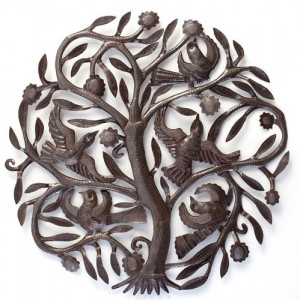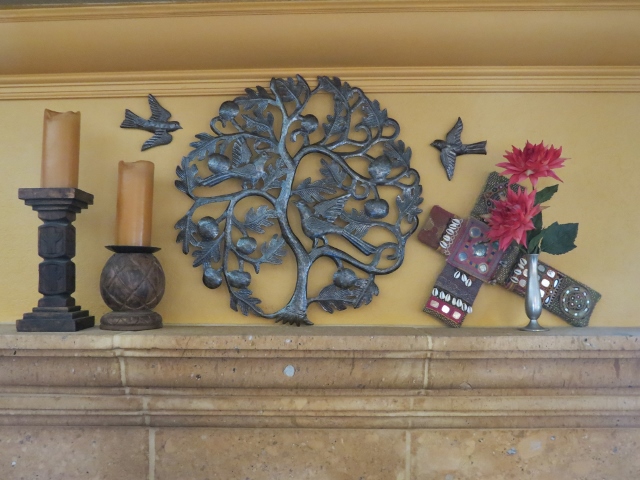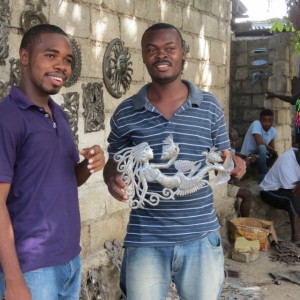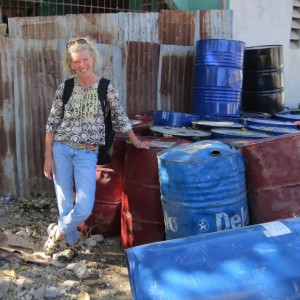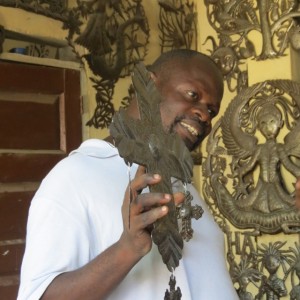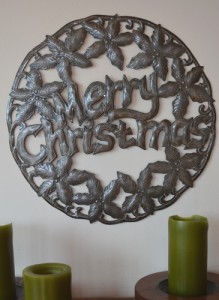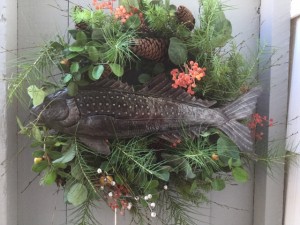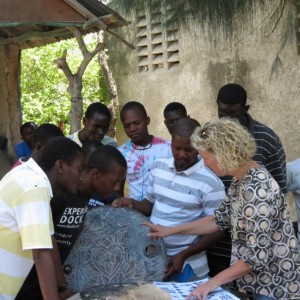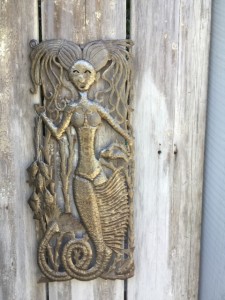December 5, 2015

A Haitian version of the Nativity, by Exulien Exuma
Isn’t it fun to look at Nativity scenes? I love to see how the “First Christmas” is expressed in folk art, with variations from one artist to the next;
one tradition to the next. Diversity is a wonderful thing! Just looking at the three pictured here, the cultural clues are as distinct as they are endearing.
In the first example – worked in recycled metal from Haiti by Exulien Exuma – the evidence of it’s tropical origin is plain. The Holy Infant is unswaddled, for the evening is warm and balmy. He is laying in a tuft of grass under swaying palms, Joseph wears a straw hat, and Mary’s hair is bound up in a kerchief, Caribbean-style. A goat stands in close attendance, nary a sheep or camel in sight.
This Peruvian version, created in Ayacucho, has design details characteristic of the indigenous cultures of the Andes. Even the clay from which it
is made is indicative of its source. The bread being offered by the adoring shepherd is likely Pan de Chuta, if I had to guess. (And I do.) I think it’s a good guess, though. Pan de Chuta is a sweet, anise-flavored bread and regional specialty of the Peruvian Andes. Baked in traditional
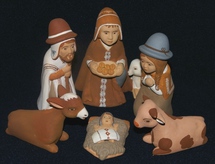
Peruvian Nativity set from Ayacucho.
wood-burning ovens over eucalyptis leaves, and the small, round loaves are frequently offered as gifts. (To read more about the bread or to see the recipe, click here.) The shepherd also wears a knitted cap, very typical of the region, while Mary and Joseph wear heavy felted wool fedoras, also popularly worn in the Andes. Each of their cloaks, and the Holy Infant’s blanket bear indigenous weaving motifs, all of which combine to create a very Andean signature on the scene.
The third example, though not strictly a Nativity scene, depicts the Holy Family in their flight to Egypt, as interpreted by a Central American folk
artist from El Salvador. Again, clues to the artist’s world view abound. The perfectly cone-shaped mountains that loom in the background of the
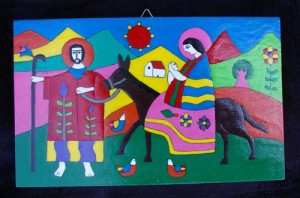
From El Salvador comes this vibrantly colored rendering of the Holy Family.
painting echo the volcanic cones that dominate the Salvadorean horizon. Mary and Joseph are enveloped in what might be considered biblical robes, but their bright colors and bold floral and geometric patterns are straight out of the Central American tradition as are the chickens that mill and peck near Joseph’s feet.
While the central story of the First Christmas is universal, its representation through folk art is a unique reflection of the individual artist’s cultural identity, conveyed through the values and aesthetics of his communtiy. Like a translation, folk art nativities are expressions in colloquial language, with nuances and accents that make them vivid and easily understood. And that is precisely what makes each one unique and wonderful.
Contributed by Linda for It’s Cactus
